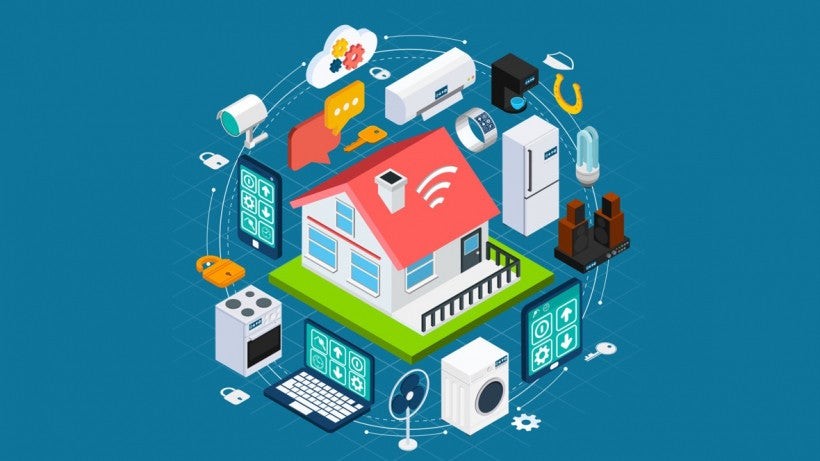The realm of wearable technology has always been defined by its intimacy with the user, placing computing power directly on the body. For years, interaction with these devices has primarily relied on physical touch—swipes, taps, and button presses on tiny screens. However, a significant paradigm shift is quietly reshaping this landscape: the emergence and refinement of touchless user interfaces (UIs). This evolution promises to transform how we interact with our smartwatches, fitness trackers, and augmented reality glasses, ushering in an era of more seamless, intuitive, and context-aware experiences that fundamentally alter the very definition of “wearable.”
The impetus behind the move towards touchless UIs in wearables is multifaceted. Firstly, the inherent limitations of small screens are undeniable. Precision touch input on a watch face or a tiny smart ring can be cumbersome, especially when active or wearing gloves. Imagine trying to precisely tap a small icon on a smartwatch while jogging, or navigate a menu on a fitness tracker with sweaty fingers. These scenarios highlight the friction created by traditional touch-based interfaces. Secondly, certain environments and activities demand truly hands-free operation. Consider a surgeon needing to access patient data during an operation, a chef following a recipe with flour-covered hands, or a factory worker reviewing schematics in a hazardous environment. In these critical contexts, needing to physically touch a device can be impractical, unhygienic, or even dangerous. Touchless UIs offer a pathway to interaction that respects these real-world constraints, enabling access to information and control through gestures, voice, gaze, and even subtle physiological signals.
Voice control, a well-established touchless interface, has become a cornerstone of modern wearables. Smartwatches and smart rings now routinely integrate sophisticated voice assistants, leveraging advancements in natural language processing and on-device AI. Users can set timers, send messages, check weather, initiate workouts, or even control smart home devices with simple spoken commands. This frees up hands and attention, making wearables truly convenient during activities where manual interaction is impractical or unsafe, such as driving, exercising, or cooking. The continuous improvement in understanding natural language and contextual cues means these voice interfaces are moving beyond rigid command structures to a more fluid, human-like conversation. This pervasive integration of voice has already fundamentally changed how many users interact with their devices, often opting for a spoken command over a series of laborious taps on a miniature screen.
Beyond voice, gesture control is rapidly gaining traction, leveraging micro-movements of the hand, wrist, or even the entire body. While earlier iterations of gesture control could be clunky and prone to misinterpretation, advancements in sensor technology – including more precise accelerometers, gyroscopes, and even miniature radar-based systems – are enabling more accurate and subtle interactions. For instance, some smartwatches now allow users to answer calls by clenching their fist or dismiss notifications with a gentle wrist flick. This can be incredibly useful when one’s other hand is occupied. Augmented reality (AR) glasses, in particular, are poised to revolutionize interaction through gesture, allowing users to manipulate virtual objects or navigate interfaces simply by moving their hands in the air, without ever touching a physical surface. This capability is critical for AR devices, where physical controls would obstruct the immersive visual overlay. The future could see users scrolling through content on their smart glasses with a gentle finger tap on their thumb, or making a “grabbing” motion to select an item, all seamlessly integrated into their field of vision and requiring no tactile input.
Gaze tracking, though still in its nascent stages for widespread consumer wearables, holds immense promise, especially for AR and smart glasses. Imagine navigating menus or selecting options simply by looking at them. This technology leverages miniature eye-tracking cameras to precisely determine where a user’s gaze is directed, effectively transforming the eyes into a pointing device. Combined with subtle voice commands (“select this”) or micro-gestures (like a purposeful blink), gaze tracking could offer an unparalleled level of intuitive interaction, reducing cognitive load and making prolonged engagement with wearables feel more natural and less like interacting with a traditional screen. For specialized professional applications, such as medical diagnostics where a clinician needs to access patient information without breaking sterile fields, or in industrial settings for reviewing schematics hands-free, gaze-controlled interfaces could be truly transformative for efficiency and safety.
Furthermore, the boundary between passive monitoring and active control is blurring with the advent of physiological UIs. This cutting-edge area explores how our body’s own signals can be used for interaction. For example, some research is exploring how changes in heart rate variability, skin conductance, or even subtle muscle electrical activity (measured via electromyography, or EMG) could be interpreted as commands. While not yet mainstream in consumer products, the long-term potential here is to create truly invisible interfaces where the device intuitively responds to a user’s physiological state or subconscious intent, requiring no conscious input at all. This level of seamless integration aims to make the technology disappear entirely, allowing users to focus entirely on their tasks or experiences without the cognitive overhead of device interaction.
The implications of this profound shift towards touchless UIs for the wearables market are far-reaching. It moves wearables beyond being mere notification centers or basic fitness trackers to becoming true, integrated partners in daily life, capable of responding to us in more natural, human ways. This enhanced interactivity fosters greater user adoption by reducing friction and making devices more accessible across a wider range of activities and user demographics, including those with dexterity challenges. For businesses, this opens up vast new avenues for application development, especially in professional environments where hands-free operation is critical for efficiency, precision, and safety. The market for purpose-built wearables with specialized touchless interfaces in healthcare (e.g., patient monitoring and surgical assistance), manufacturing (e.g., assembly instructions), logistics (e.g., inventory management), and field services (e.g., remote repair guidance) is poised for significant growth.
However, the transition is not without its challenges. Accuracy and reliability remain paramount; misinterpreting a gesture or a voice command can quickly lead to frustration and erode user trust. Battery life, already a perennial concern for many wearables, could be further strained by the continuous sensor processing and sophisticated AI required for robust touchless interaction. Privacy concerns related to constant voice or gaze monitoring also need careful consideration, transparent policies, and robust security solutions to ensure user comfort and trust. Despite these hurdles, the trajectory is clear. Touchless UIs are not merely a fancy add-on; they are becoming fundamental to the next generation of wearable experiences, promising to make our interactions with technology more intuitive, effortless, and deeply integrated into the very fabric of our lives.





